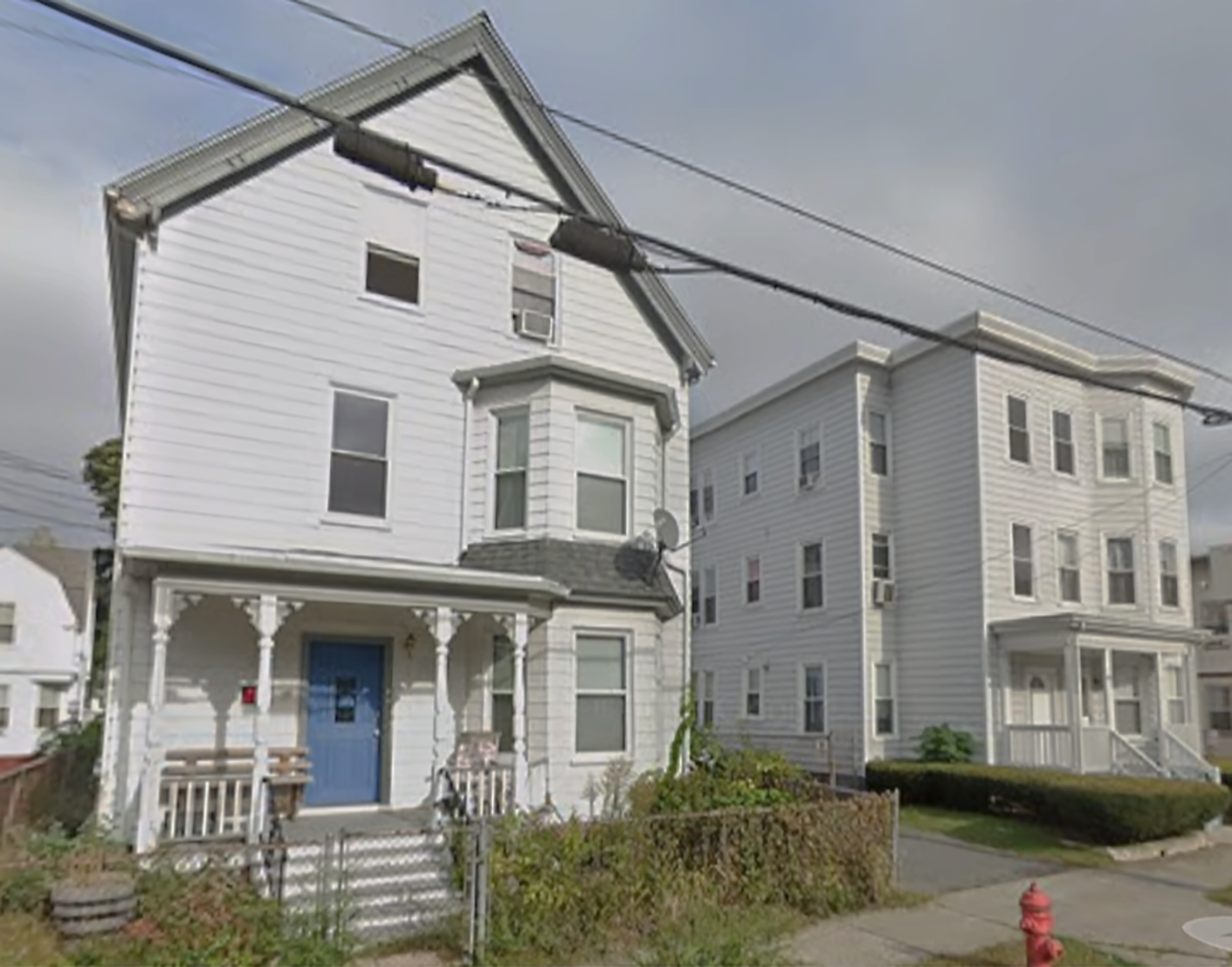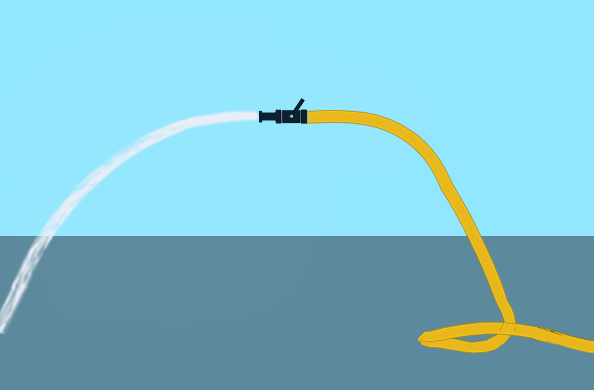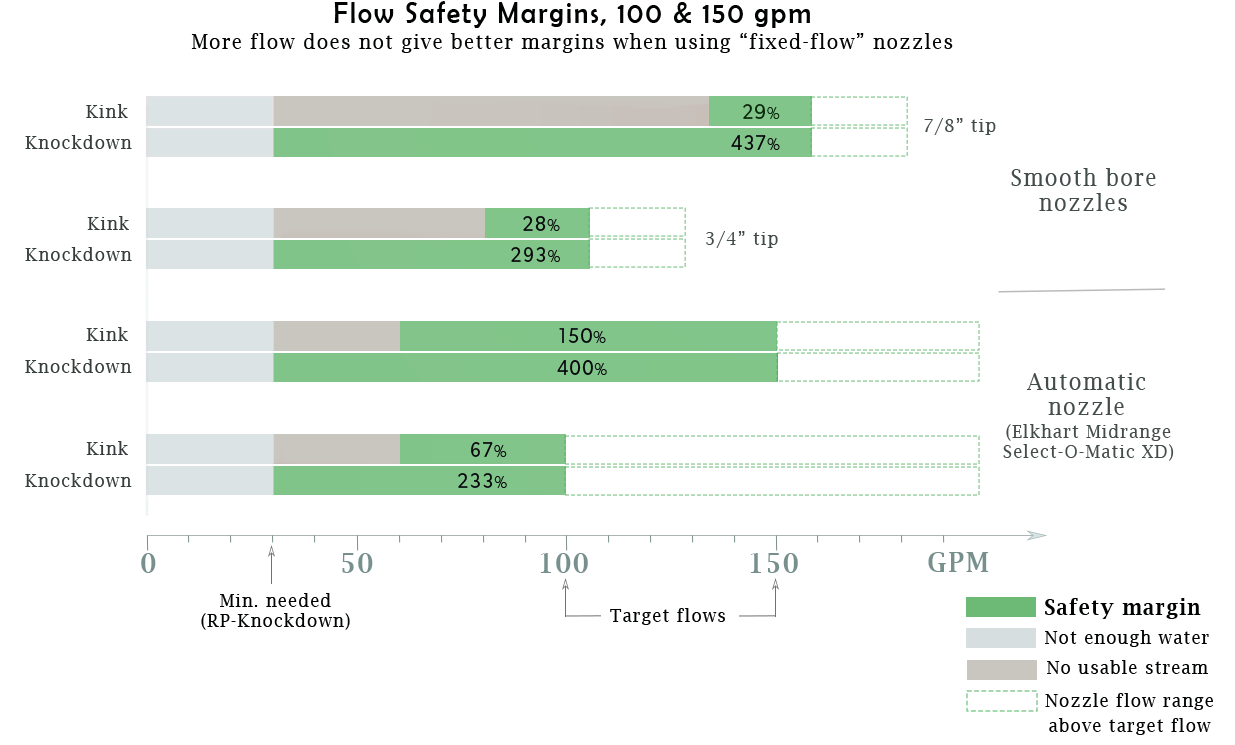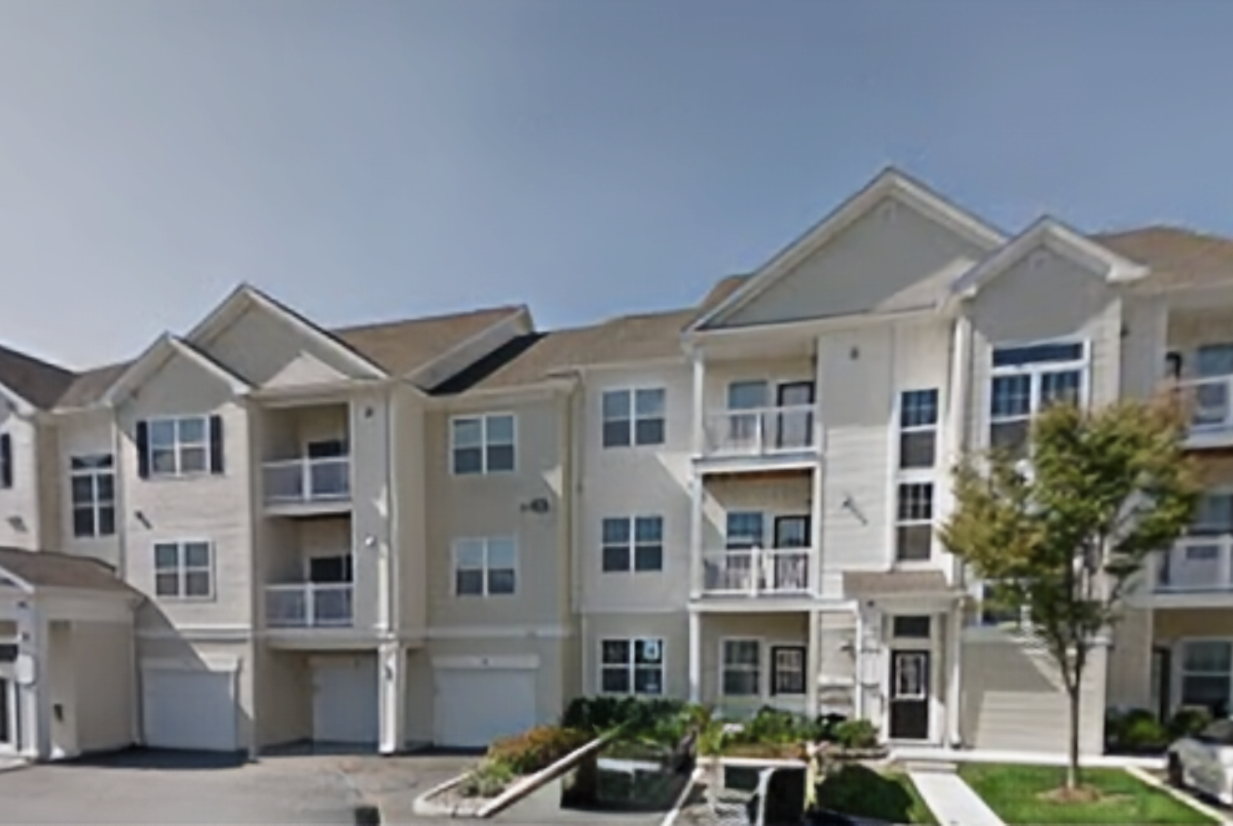GPM and Safety Margins etc
for Firefighting Flows
With input from Joe MaloneyJoe is a former District Fire Chief (FF 32 yrs, 19 as District Chief, Lynn MA),
1st draft 30Aug2022 Latest rev 07Aug2025
Feedback/Qs roomfiresetc@gmail.com

How much water should firefighters flow through a hose making an interior attack against common residential fires?
The more-is-better argument is popular in the U.S. right now, but any bandwagon should welcome scrutiny. It’s okay to revisit any question.
Is 150 gpm better than 100? 185 better than 150? Would 200 be better? To see why all three answers are "no", break the issue into two queries.
- What minimums do you need?
- How much extra do you want as a margin of safety?
To find answers, we need to view safety margins as the basis for dealing with a wide range of real-world scenarios. We need to realize that:
- There are multiple safety margins in play.
- The margins don’t have the same minimums (reference points).
- Increases to a margin have diminishing value as the margin grows (i.e. increases have less value for margins that are already big).
- There are always tradeoffs. Margin increases come at a price.
The two main gpm safety margins are for knockdown and flow reduction. You want to be okay if knocking the fire somehow requires more water than expected. You also want to be okay if a kink or some other mishap reduces flow to the nozzle.

The reference point for the flow-reduction margin (RP-kink) is the smallest flow that will provide a usable stream.A usable stream is one that has enough reach but not too much reaction force. It’s the bottom of the nozzle’s gpm operating range.A nozzle's gpm operating range is the range of flows that will produce a usable stream. Precise limits are arguable, but comparisons are valid.
The reference point for the knockdown margin is the smallest flow that will black the fire out. Any flow less than RP-Knockdown will fail to kill the fire. Any flow more than RP-Knockdown will give you a margin of safety. The actual number varies from fire to fire, so for planning purposes we take 30 gpm as an adequate residential RP-Knockdown. It would easily cope with all but the largest residential rooms.
Your planned safety margin in each case is the difference between the reference point and the target flow that you select.
So how big do we want our margins to be? Is bigger better? How does risk change if we flow more water?
The knockdown margin is like most safety margins—distance above its fixed reference point limits the benefit of any increase to the margin. If your RP is 30, a target flow increase from 40 to 60 could be valuable. A boost from 140 to 160 would not. It’s unlikely that the higher numbers would ever come into play.
The flow-reduction margin is more complex. Its reference point (RP-Kink) varies with nozzle design and sometimes with flow rate. Comparisons require a closer look at the context. Oftentimes more flow will not give you a bigger margin at all. Here are four examples.

Figure 6-3 shows that, when some departments pushed residential target flows from 100 gpm to 150, they expanded knockdown margins that were already large (over 230%). Any risk reduction was tiny. Kink margins got worse if they changed from adjustable-flow to fixed-flow nozzles (e.g. automatic to smooth-bore); got better if they kept adjustable-flow; and stayed the same if they kept fixed-flow. So marginal benefit from the flow increase went only to departments that had adjustable-flow nozzles and stayed with them. They saw a modest decline of their risk from kinks.

Comparing benefits to costs, we see several tradeoffs, but two stand out:
- Applying more water requires more exertion.
- Applying more water requires more water.
More exertion should trigger questions about cardiac events, about using your air supply faster, reduced work time, and possibly exhaustion. Using more water can of course cause you to run out of water, but the fear of running out of water can also have a ripple effect on other decisions and cost you time.
You're safer and more effective if you take a disciplined approach to exertion efficiency and water efficiency.
But don't stop there. Study more tradeoffs: maneuverability, stream reach, adaptivity, false sense of security, training overhead, water damage, water weight, runoff etc. See the whole board. Think beyond room knockdown—it's often the easy part.
Remember that the tradeoffs are real and the bandwagon should spark skepticism:

Be skeptical of recommendations that add difficulty or complexity to an operation.
Be skeptical of the combat metaphor. Talking about “meeting the fire with overwhelming force” is not a substitute for thinking about how to put the fire out.
Be skeptical of anxiety-based language. A nozzle team is unlikely to ever need or benefit from “every drop of water that you can get.”
Be skeptical of comparisons to the past. They’re often false.
Be skeptical of training-prop magic shows. Ask the
basic simulation questionsWhat exactly is being simulated?
How is this simulation different from the corresponding real-world situation?
early and often. Be wary of vague answers. Be wary of a fast presentation.
Be skeptical of knee-jerk objectives. “Apply as much water as possible” is a hollow objective that betrays a fundamental lack of understanding.

